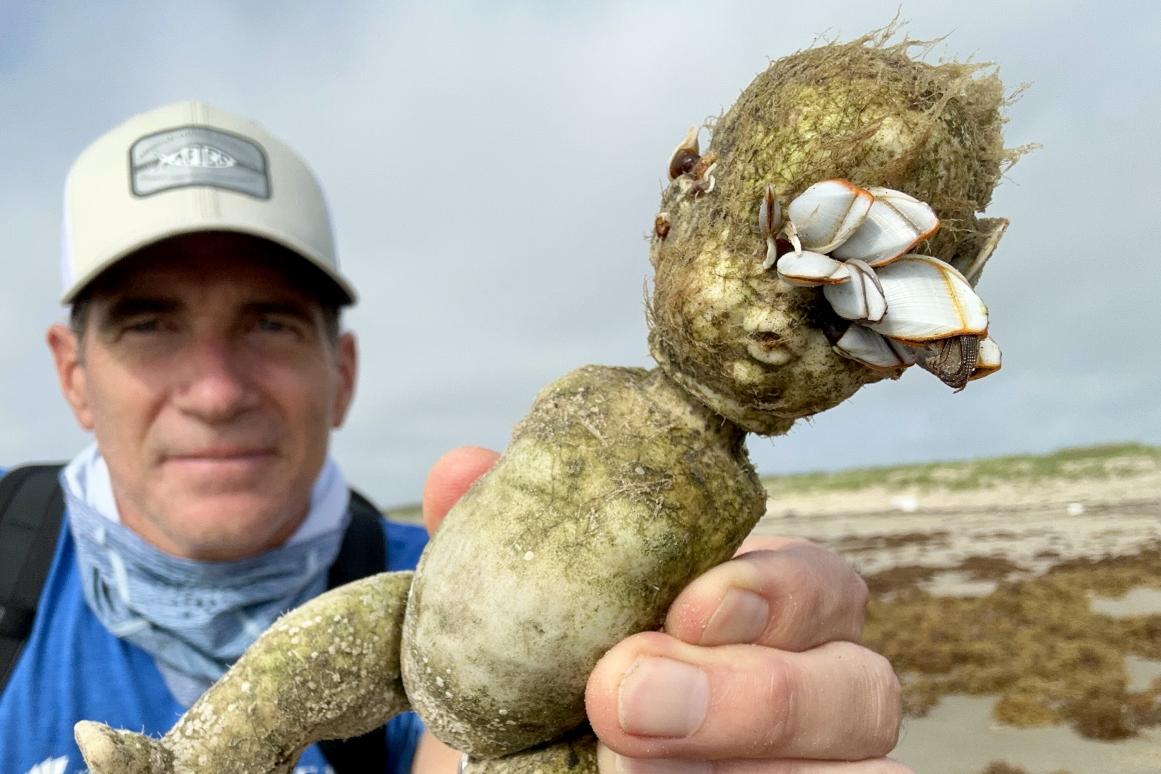Creepy Dolls Offer Message From the Ocean

Each week during my beach surveys along the Texas coast, I never know what I’ll find washed up with the tide, but one category of discovery never fails to raise eyebrows — creepy dolls. Worn, sun-bleached, and often missing limbs or eyes, these eerie toys have become one of the most bizarre and talked-about finds during my time beachcombing. People often ask, “Where are these dolls coming from?”
There are plenty of theories. Some think they fell out of cargo containers that slipped off ships during storms. Others believe they were simply lost by children playing at the beach. A few even wonder if they’re connected to La Isla de las Muñecas, or “Doll Island,” in Mexico, an eerie island where dolls hang from trees as offerings to spirits. While that makes for a great ghost story, the real answer might be less spooky but more important.
I believe most of the dolls — and the thousands of other pieces of marine debris we see — are washing in from rivers that dump plastic and trash from all over the world into the ocean. Once in the water, ocean currents, including the powerful Loop Current in the Gulf, transport this debris across vast distances. Here in Texas, we’re in the perfect (or unfortunate) position to catch it all. In fact, our beaches receive about 10 times more marine debris than other Gulf states due to how these currents wrap around and deposit items along our shores.
While the creepy dolls make for fascinating and sometimes unsettling beach finds, they also serve as haunting reminders of how connected our waterways are, and how far plastic pollution can travel. Every doll tells a story, not just of playtime lost, but of how our trash can impact coastlines and ecosystems thousands of miles away.
So next time you see one of these unsettling faces staring up from the sand, remember: it’s more than just a creepy doll. It’s a message from the ocean about the plastic journey we’re all part of.
